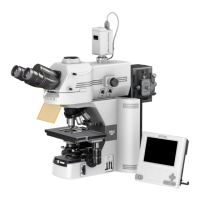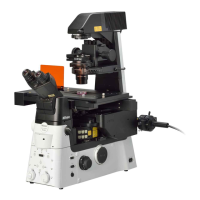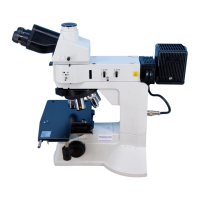Chapter 2 Individual Operations
56
Chapter 2
Individual Operations
■ Adjusting the excitation light
Excessively bright excitation light will accelerate the decoloration of the specimen, making it more difficult to acquire
suitable fluorescent images. Insert ND filters into the optical path to adjust the brightness.
■ Specimen
Photomicrography of faded specimen sections requires prolonged exposure time and results in poor color
reproduction and low-quality images. Move the specimen to obtain images from a fresh section of the specimen
previously unexposed to excitation light. For best results, use the phase contrast method to select a specimen
section for photomicrography, and then switch to the fluorescent method to capture images.
Enhancing the contrast of a simple or sensitive tint plate image
With Ci-S, since the infrared light from the illuminator reduces the
contrast of an image, insert an optional IR cut filter in the field lens
before attaching the polarizer unit.
Cover the IR cut filter for the simple polarizer over the field lens.
Screw the IR cut filter for a sensitive tint plate polarizer into the
bottom of the polarizer unit for first-order red compensation.
ND4
ND8
OUT
IN
ND4
ND8
OUT
IN
ND4
ND8
OUT
IN
ND4
ND8
OUT
IN
Attaching an infrared ray blocking filter
Adjusting the brightness of the image on the monitor
When observing images captured by the camera and displayed on the monitor, you can adjust the brightness by varying
camera adjustment parameters, such as display mode, exposure mode, photometry mode, exposure compensation, and
image level adjustment.
See the instruction manual provided with the DS-U3, DS-L3, or the camera's control software for details.
Field lens
C-SP Polarizer Unit
for Simple
Polarization
IR cut
filter for C-SP
Field lens
IR cut
filter for C-TP
[1]
[2]
[1]
[2]
C-TP Polarizer Unit for
First-order Red
Compensation

